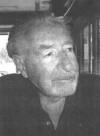|
WWII Combat Photographer
January 22, 1922 - March 11, 2007 Contributed by Phillip McKim Jim was a born in Bundy, Montana to James B. and Ora May Ebersole McKim. The family relocated the family to Oroville when Jim was a child and he graduated from Oroville Union High School in the Class of 1939. Jim worked in the fruit orchards, the Chocolate Shop (who remembers Mr. Harris and that wonderful place of his?), and a local mortuary, earning money to travel and take photographs. Jim served in the Army Air Corps during WWII as a photographer charged with capturing bomb strikes for bomb raid planning. Many men’s lives were spared because Jim installed cameras that were remotely operated and replaced the tail gunner (an assignment with a very short life expectancy), resulting in reducing crew requirements and lightening the weight load for each plane as well. His bomb group won many honors including the Presidential citation for effective bombing of strategic sites, such as rail yards, while sparing historic buildings and artifacts. Jim was "mustered out" of the Army Air Corps at Beale Air Force Base, Marysville, California. Following his service, he remained active in his veteran’s affiliation, the USAAF 319th Bomb Group. After the war, Jim spent 16 years as a medical photographer beginning at McChord Air Force Base. This included a time when wounded servicemen were arriving from the Korean Conflict. Jim developed methods of photographing their injuries to assist the medical teams to both document and to repair the physical damage inflicted on these soldiers. When he left his employment with the Air Force, he took a position as head of the medical photography department of the University of Washington for 10 years. Jim spent considerable time at, and donated over 3,000 photos to, the PIMA Air Museum in Tucson, AZ, over the last two years. The photos were all from WWII and added substantially to the museum’s extensive collection. He was interviewed extensively by museum staff three months before his death in order to expand their knowledge and understanding of the circumstances under which the WWII photos were taken. |
|---|

